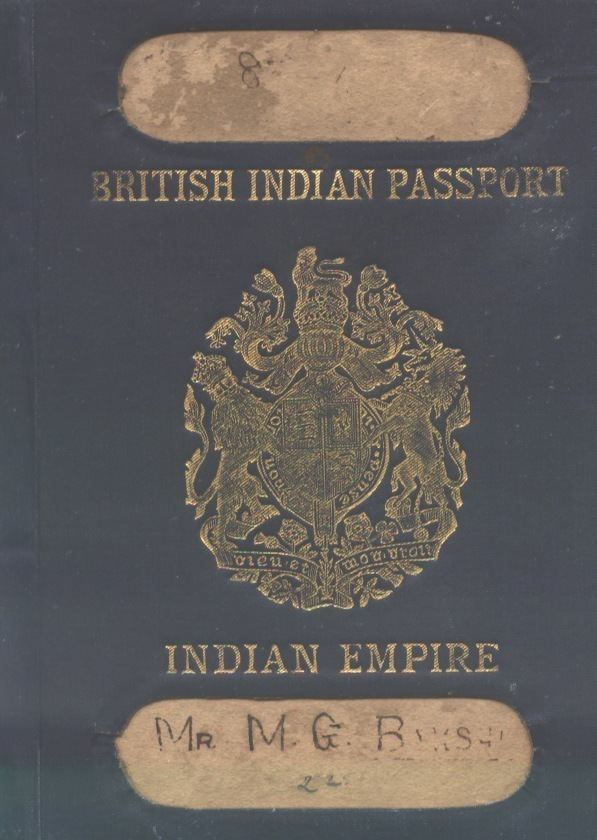Purpose Identification | ||
 | ||
The British Indian passport was a passport, proof of national status and travel document issued to the British subjects of Indian Empire, British subjects from other parts of the British Empire, and the subjects of the British protected states in India (i. e. the British Protected Persons of the 'princely states'). The title of state used in the passport was the "Indian Empire", which covered all of modern India, Pakistan, Bangladesh, and Burma.
Contents
The use of the passport was discontinued after the independence of India and Pakistan in 1947, and its bearers were entitled to opt for Indian, Pakistani or British nationality.
History
The use of passports was introduced to India after the First World War. The Indian Passport Act of 1920 required the use of passports, established controls on the foreign travel of Indians, foreigners travelling to and within India. The passport was based on the format agreed upon by 1920 League of Nations International Conference on Passports.
However, the British Indian passport had very limited usage, being valid for travel only within the British Empire, Italy, Switzerland, Austria, Czechoslovakia, Germany, France, Spain, Norway, Sweden and Holland.
Issuance
A British Indian passport could be issued to persons who were British subjects by birth, naturalisation, a British protected person or the spouse or widow of such persons. The passports were issued by the passport offices run by provincial governments and were valid for five years after issue. In 1922, applicants were charged INR 1 to receive a new passport. The price was raised to INR 3 by 1933.
Physical appearance
The passport was of navy blue colour with the emblem of the British Empire (i.e. the Royal Arms of the United Kingdom) emblazoned on the front cover. The word "British Indian Passport" was printed above the emblem and "Indian Empire" printed below. The text of the passport was printed in English and French.
Bearer details
The passport includes the following details describing the bearer:
The passports also included the photographs of the bearer and accompanying spouse. Latter half of the passport book was allocated for the visa and port of entry and departure stamps.
Passport note
The passport contains a note from the issuing state that is addressed to the authorities of all other states, identifying the bearer as a citizen of that state and requesting that he or she be allowed to pass and be treated according to international norms. The note inside of Indian Passports states:
These are to request and require in the name of the Viceroy and Governor-General of India all those whom it may concern to allow the bearer to pass freely without let or hindrance, and to afford him every assistance and protection of which he or she may stand in need.
By the order of the Viceroy and Governor-General of India.
The note bearing page is stamped and signed by the issuing passport officer with the provincial government of the place of issue.
